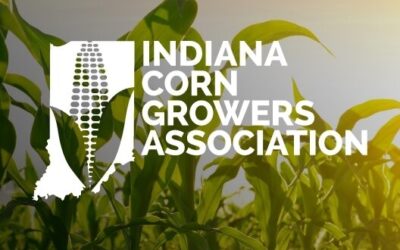USSEC works to help the people of ‘Africa’s boom town’
Recently, leaders from Nigeria and the United States met in Atlanta, Ga., to discuss and enhance collaboration to enable the country’s industry to meet its vision for nutrition and food security.
Nigeria Now, hosted by the U.S. Soybean Export Council (USSEC), welcomed His Excellency, The Honorable Ben Ayade, Governor of the State of Cross River, and leaders from Nigeria’s poultry industry. The meeting was to explore partnership synergies ahead of the International Production & Processing Expo, which brought more than 8,000 people from the international poultry industry together.
While Nigeria is known for being a fashion, tech and creative hub in Africa, nutrition and food security remain a concern. According to the Organization of Economic Co-operation and Development (OECD), in 2020, Nigeria reported 1.55 million food insecure people, including 660,000 facing an emergency crisis.
On average, Nigerians consume the protein equivalent to nearly one chicken per year, highlighting the need for access to more affordable protein. This protein deficiency manifests itself in many other areas, which need to be addressed sequentially for sustained national development.
“We have a shared priority of enabling nutrition and food security for families, communities and countries around the world, and more specifically for today, to increase Nigerians access to healthy and nutritional food,” said USSEC CEO Jim Sutter during the conference.
Based on local needs and trends, for soy specifically, the gap between the imbalance of supply and demand is forecasted to increase, according to Dr. Ayoola Oduntan, of Amo Byng, LTD, who predicts an overall deficit of more than 1.6 million metric tons of soybeans by the year 2030. This deficit factors implied productivity and yield gains.
“We hope Nigeria will take a diversified and multi-faceted approach to achieving food and nutrition security,” added Kevin Roepke, USSEC regional director for South Asia and Sub-Saharan Africa. “Local food and soy production is and will remain critically important, and we invite leaders to consider complementing their local supply with high quality imports to most effectively and sustainably meet nutrition needs.”
To address these needs, the nation’s government and industry leaders are encouraged to collaborate to establish supply chains, and the confidence in them for capital and resource allocation. These supply chains must first be developed and trusted before these fundamental needs and demands can be met.
“As USSEC collaborates with agronomy and poultry industry leaders and government officials in Nigeria, we applaud the partnerships that are in place today and hope that Nigeria Now will help provide a pathway for the accelerating food and nutrition security through collaboration and the identification of additional synergies and strengths,” said Roepke.
Speakers at Nigeria Now included members of the Nigerian food industry and U.S. Soy value chain, government officials, academia, non-governmental organizations and others. Panel discussions examined needs, challenges, and what collaborative efforts can be furthered to advance food security.
One such collaborative effort is the Soy Excellence Center (SEC) initiative in Nigeria. “The SEC is an investment that brings partnerships and local expertise to the table to build Nigeria’s young leaders’ expertise in the food industry,” Roepke explained. “The SECs take a holistic approach at bringing together a broad array of expertise and input from leaders in Nigeria’s food and feed supply chain. While relatively new, this initiative is moving the needle in advancing Nigeria’s workforce training and development, aimed at the protein value chain.”
Posted: March 25, 2022
Category: Indiana Corn and Soybean Post - Winter 2022, ISA, News




